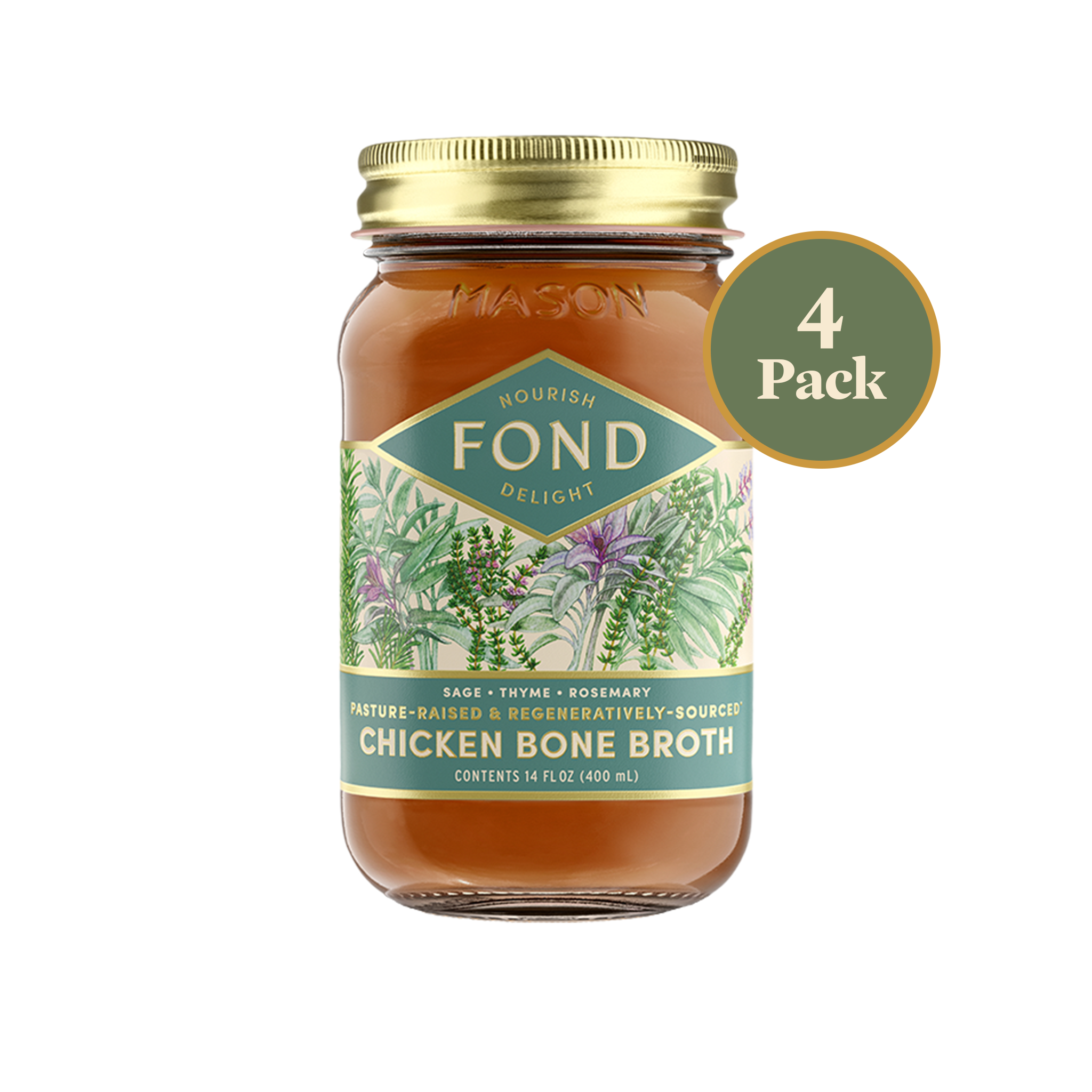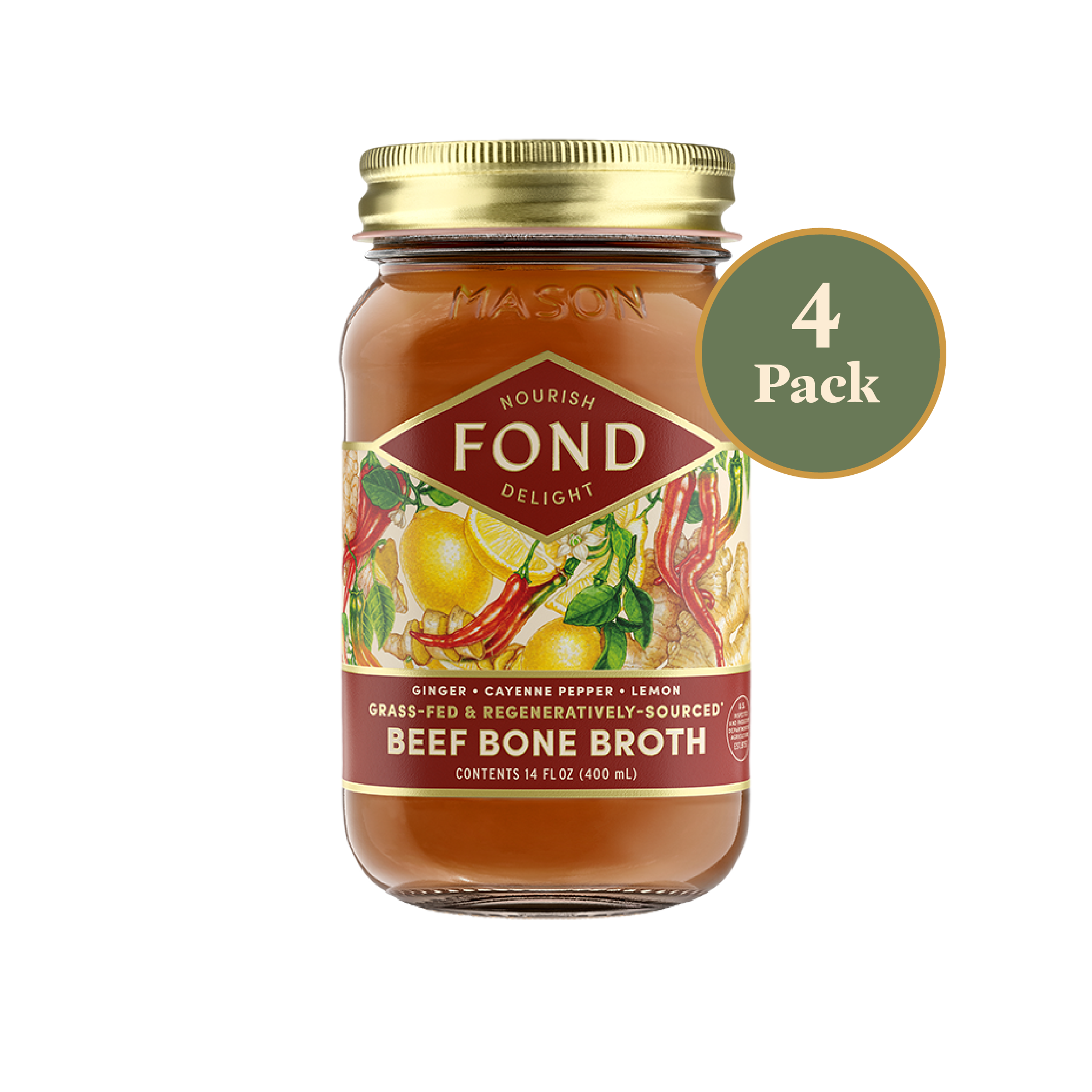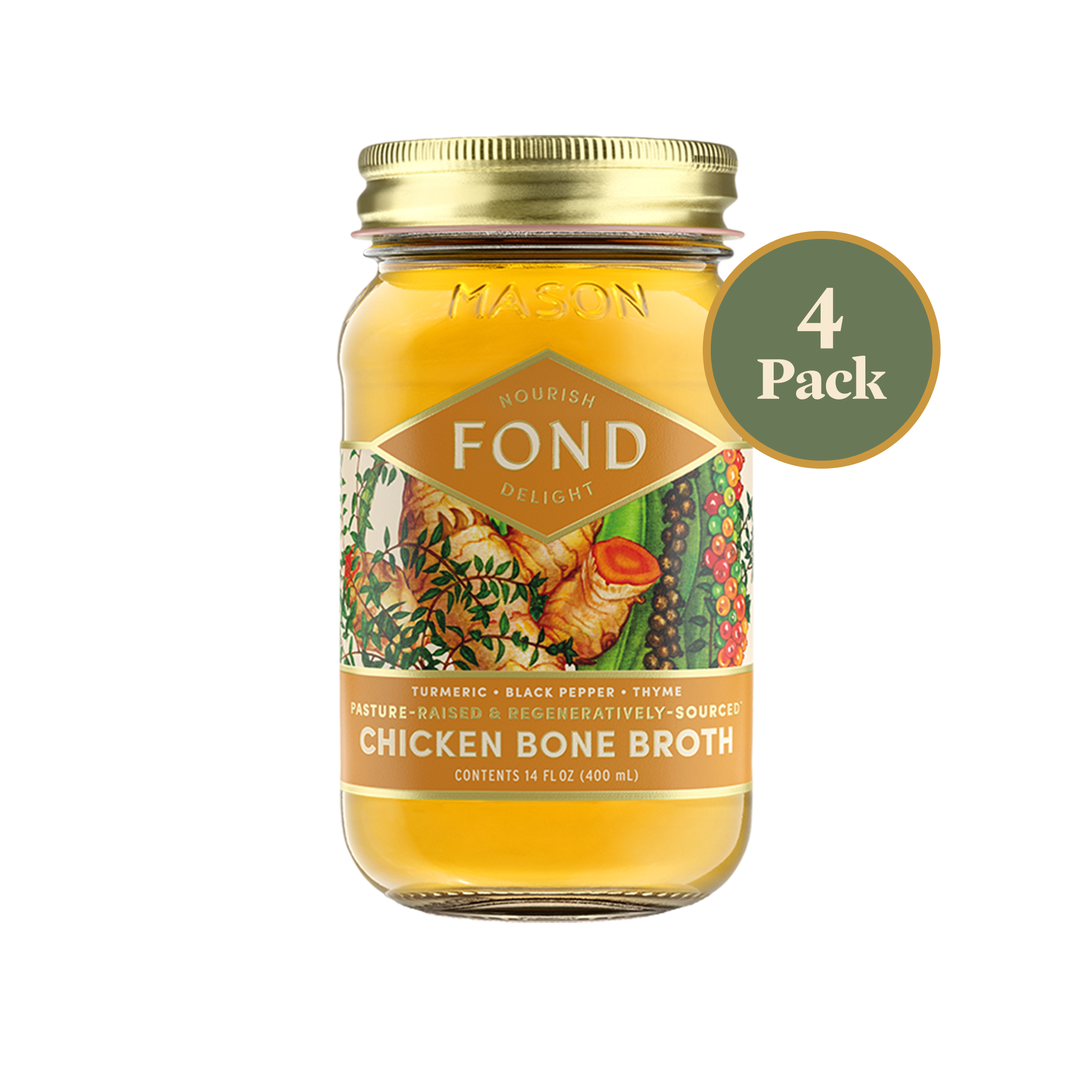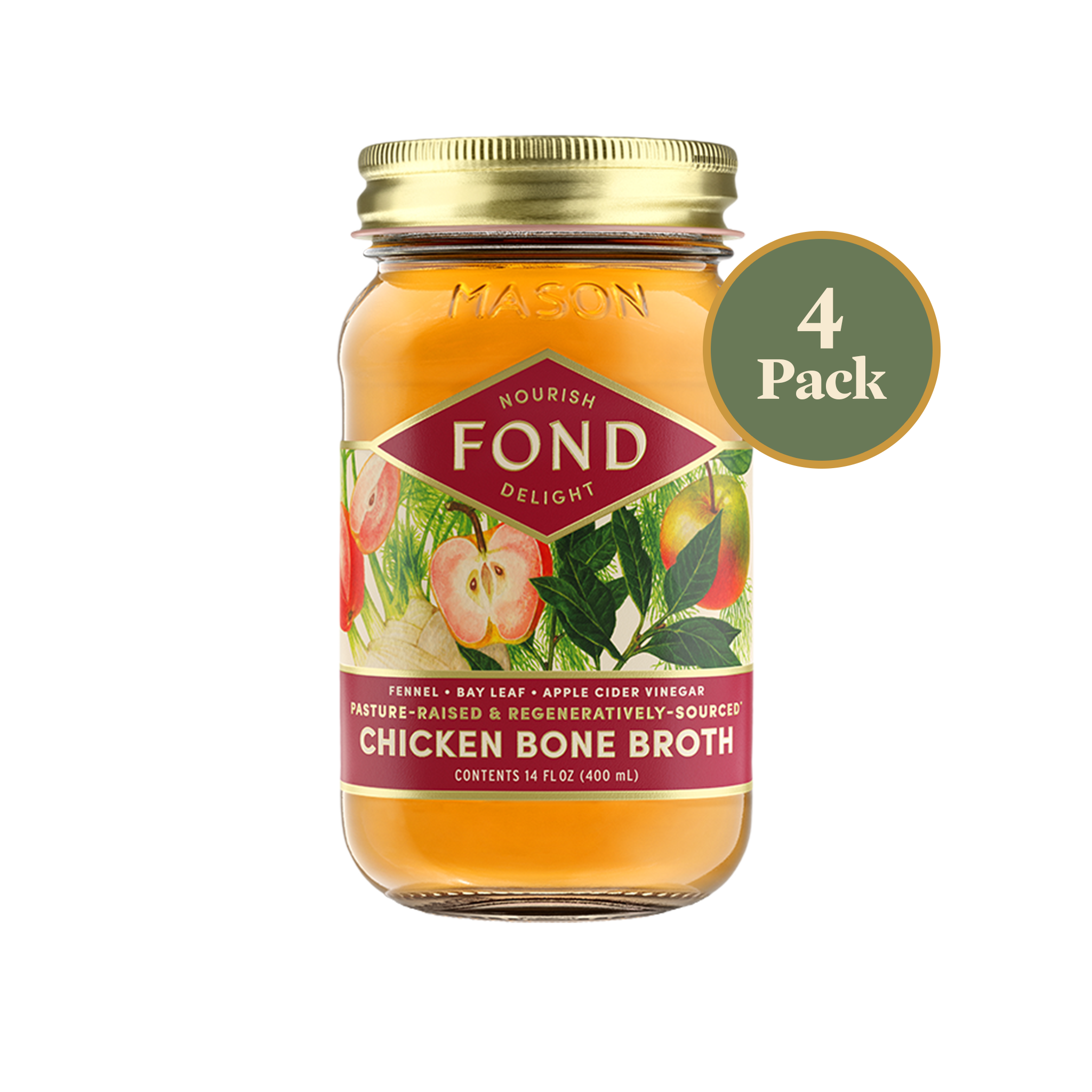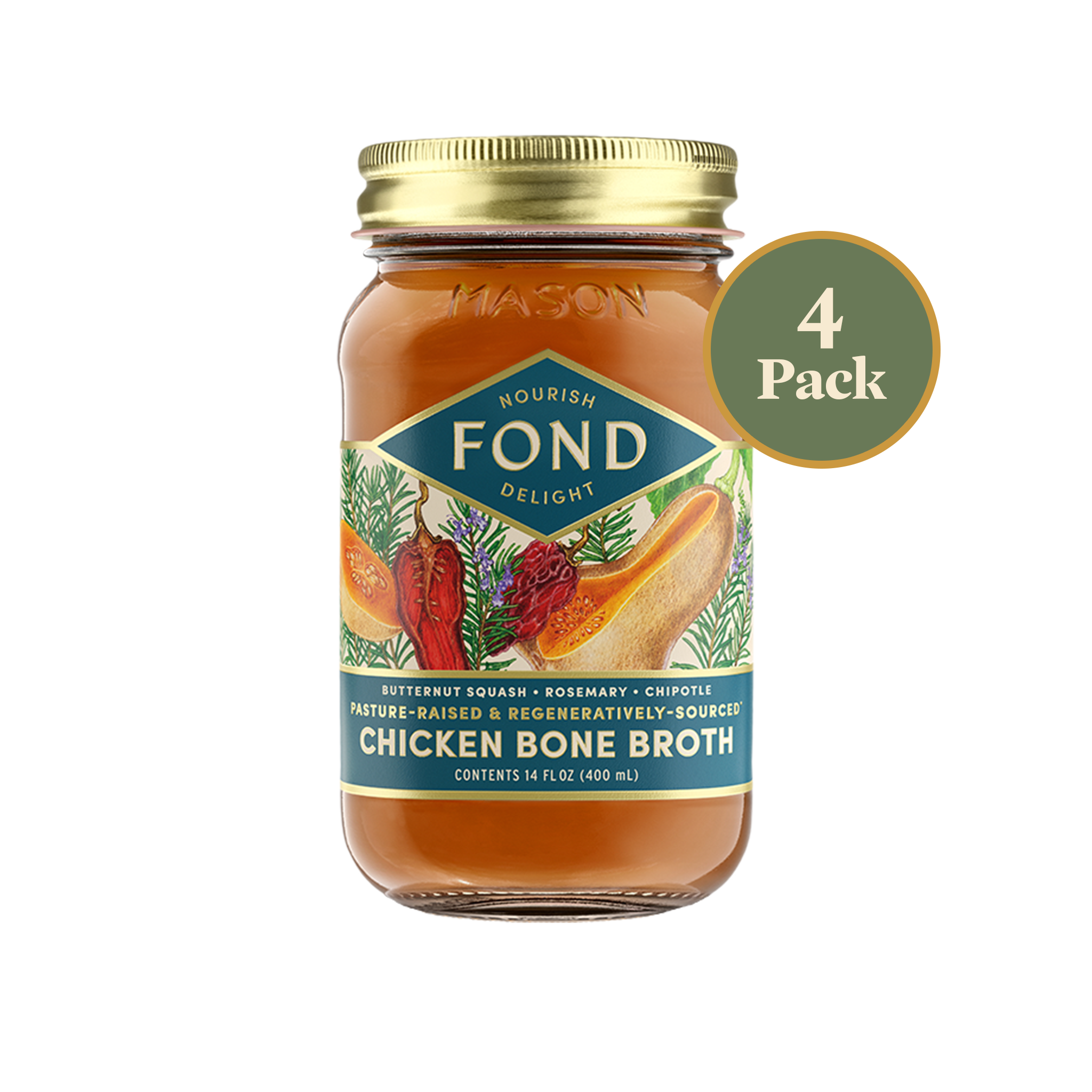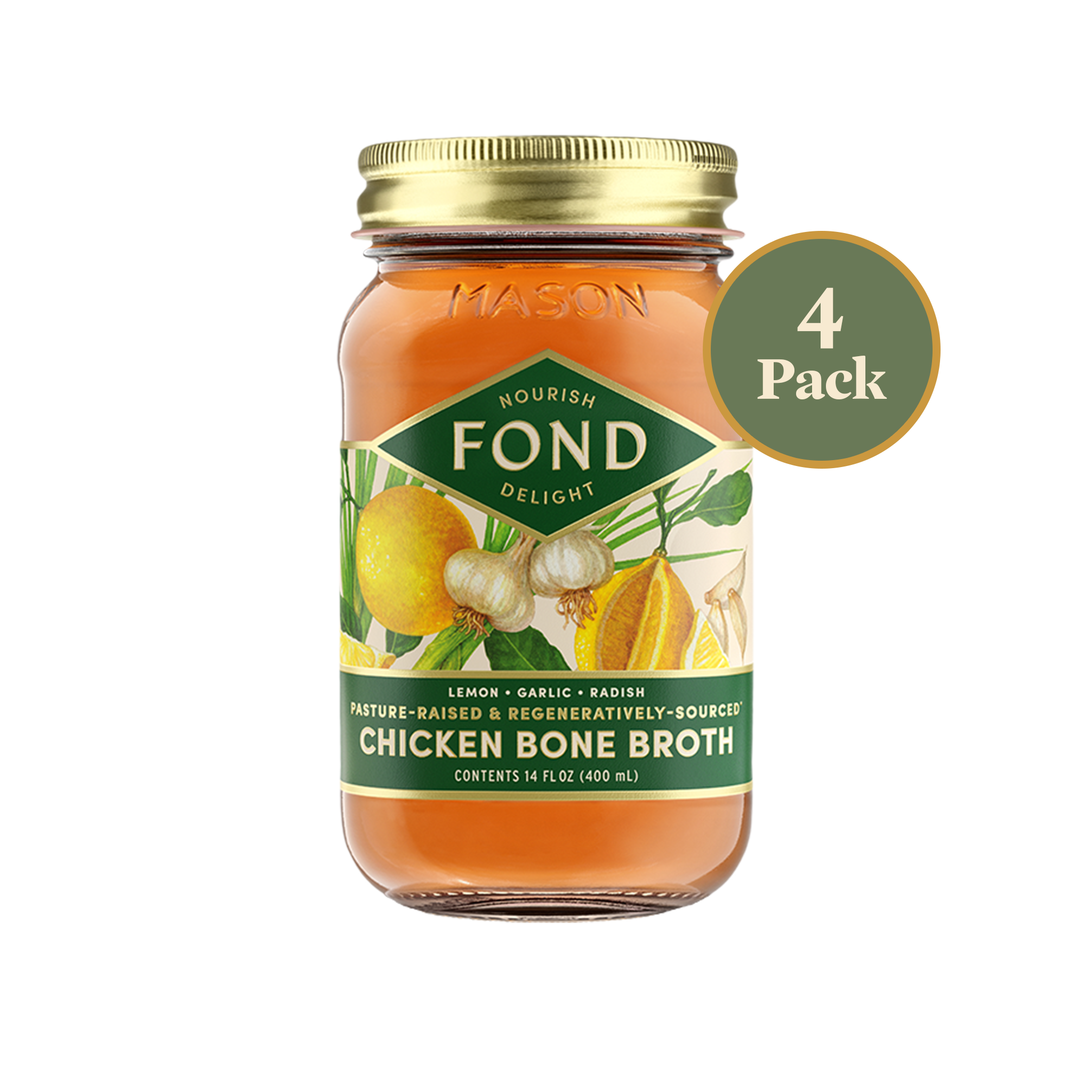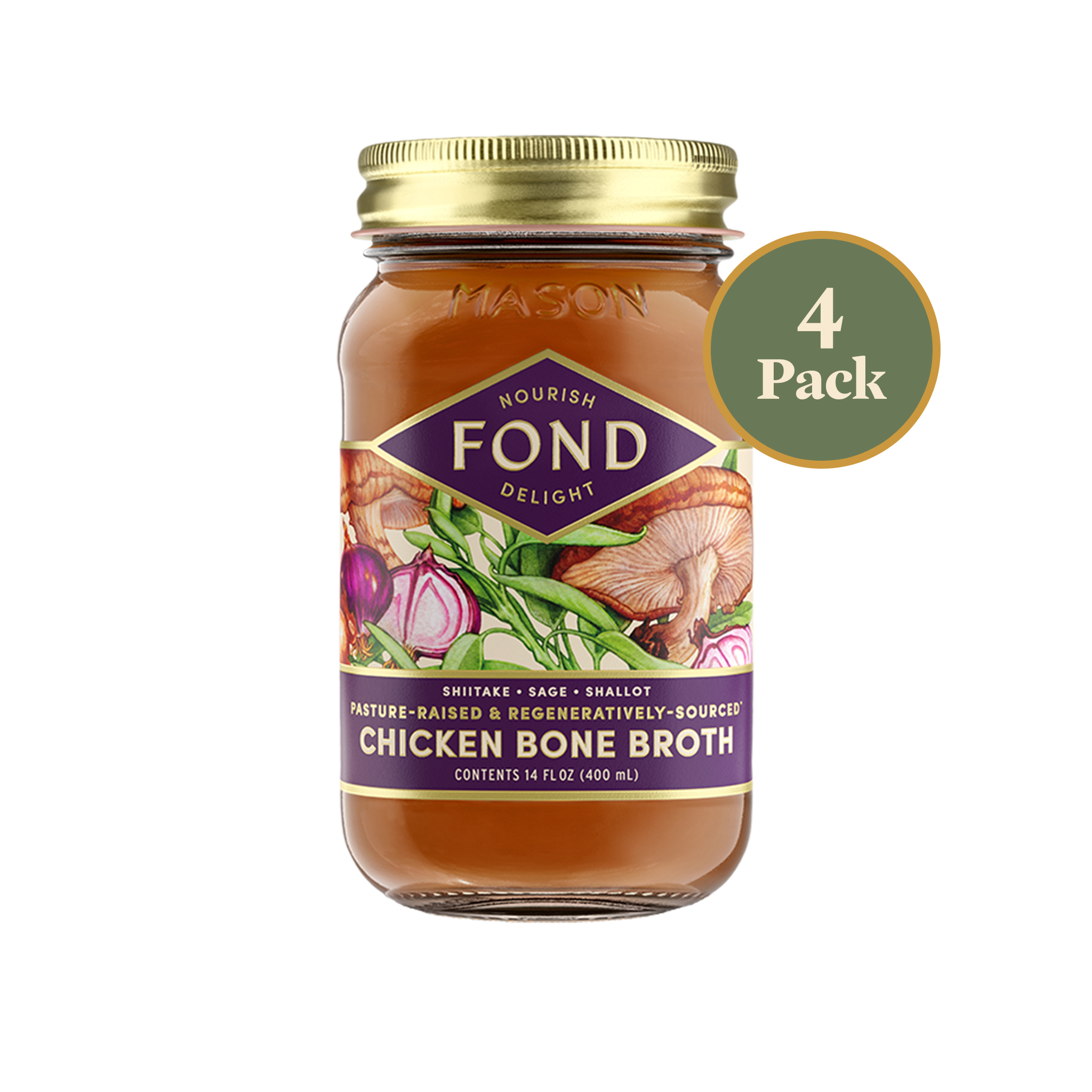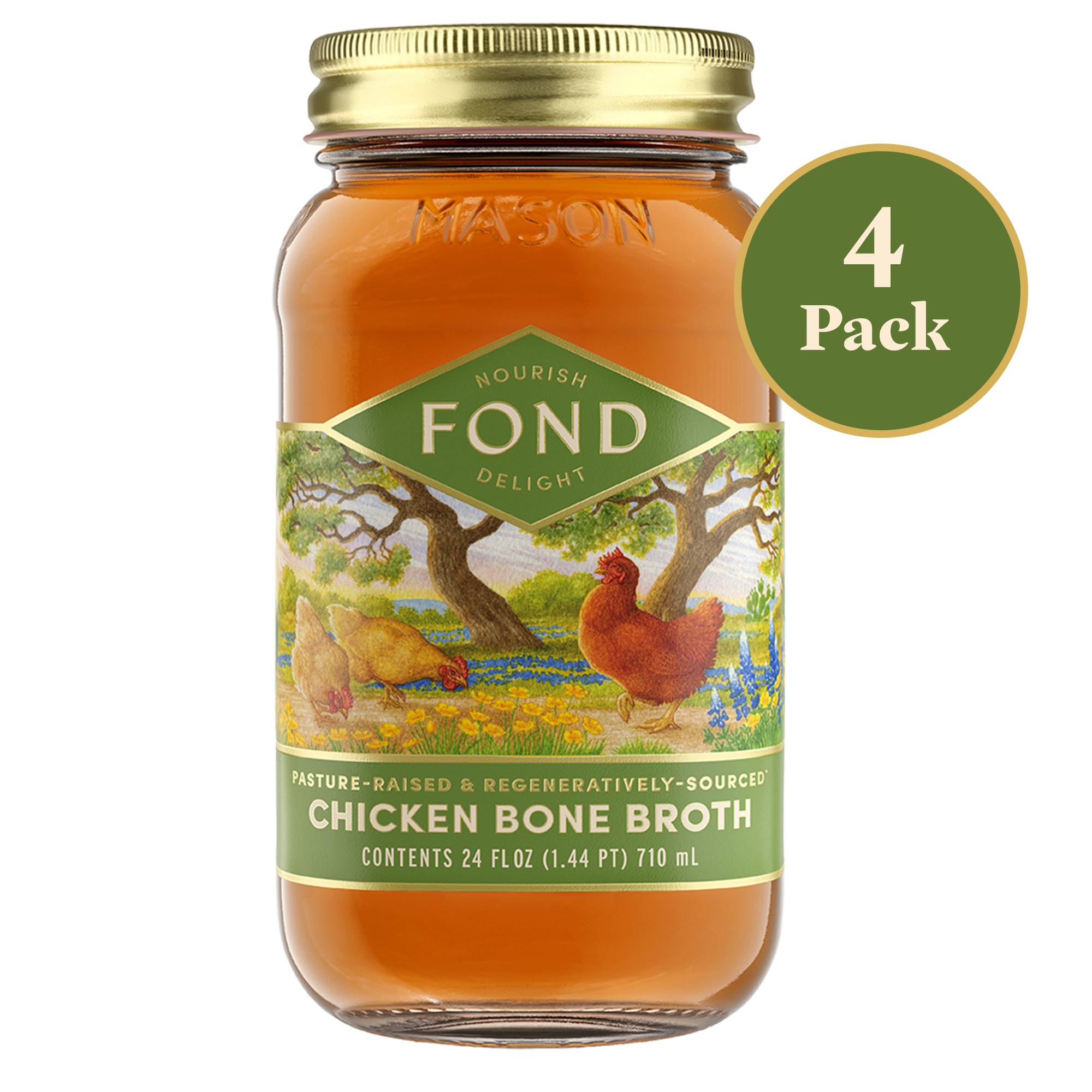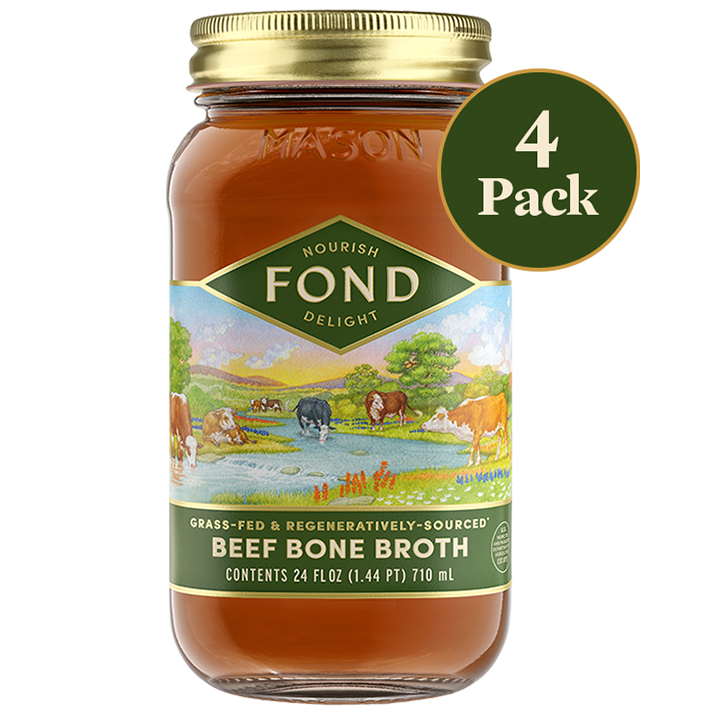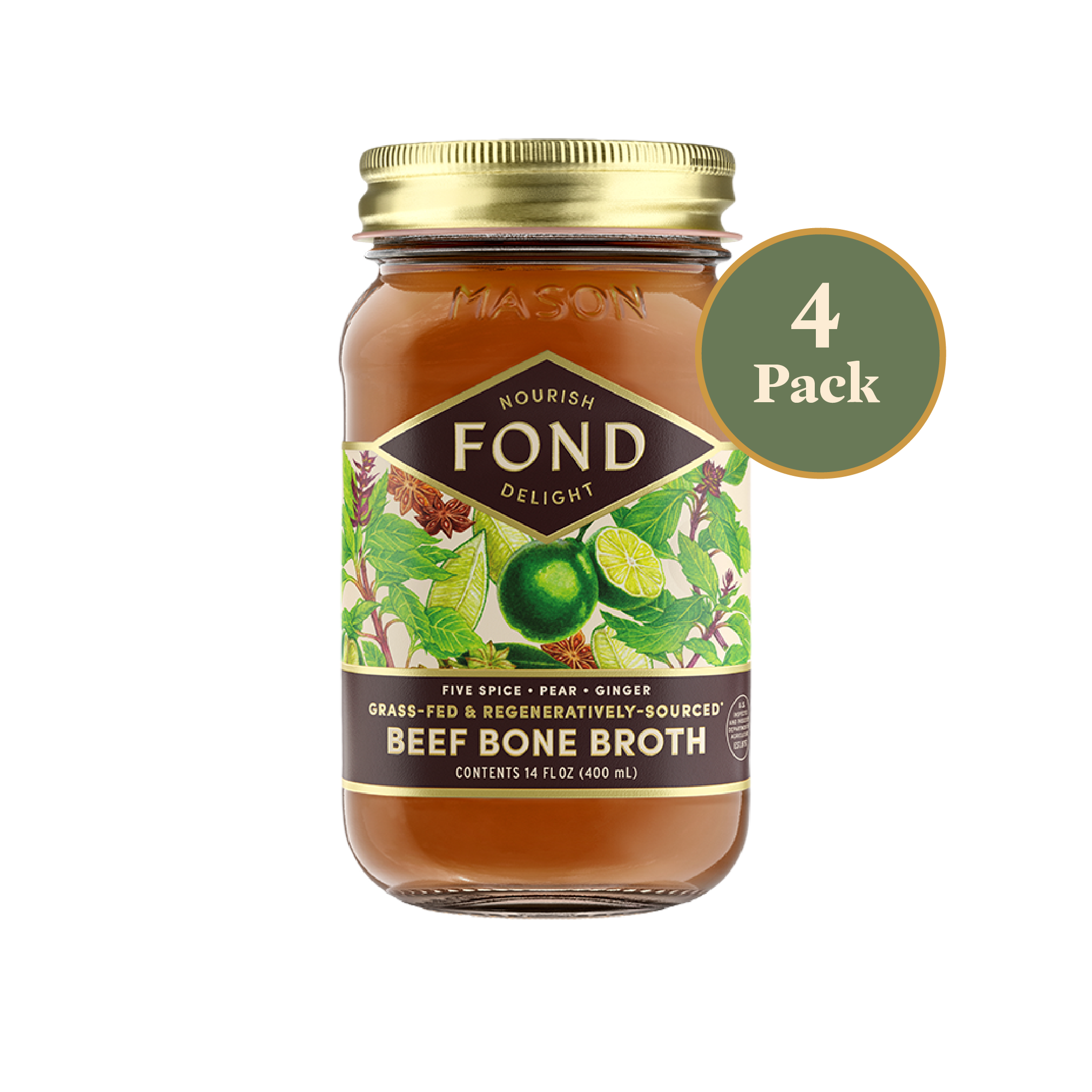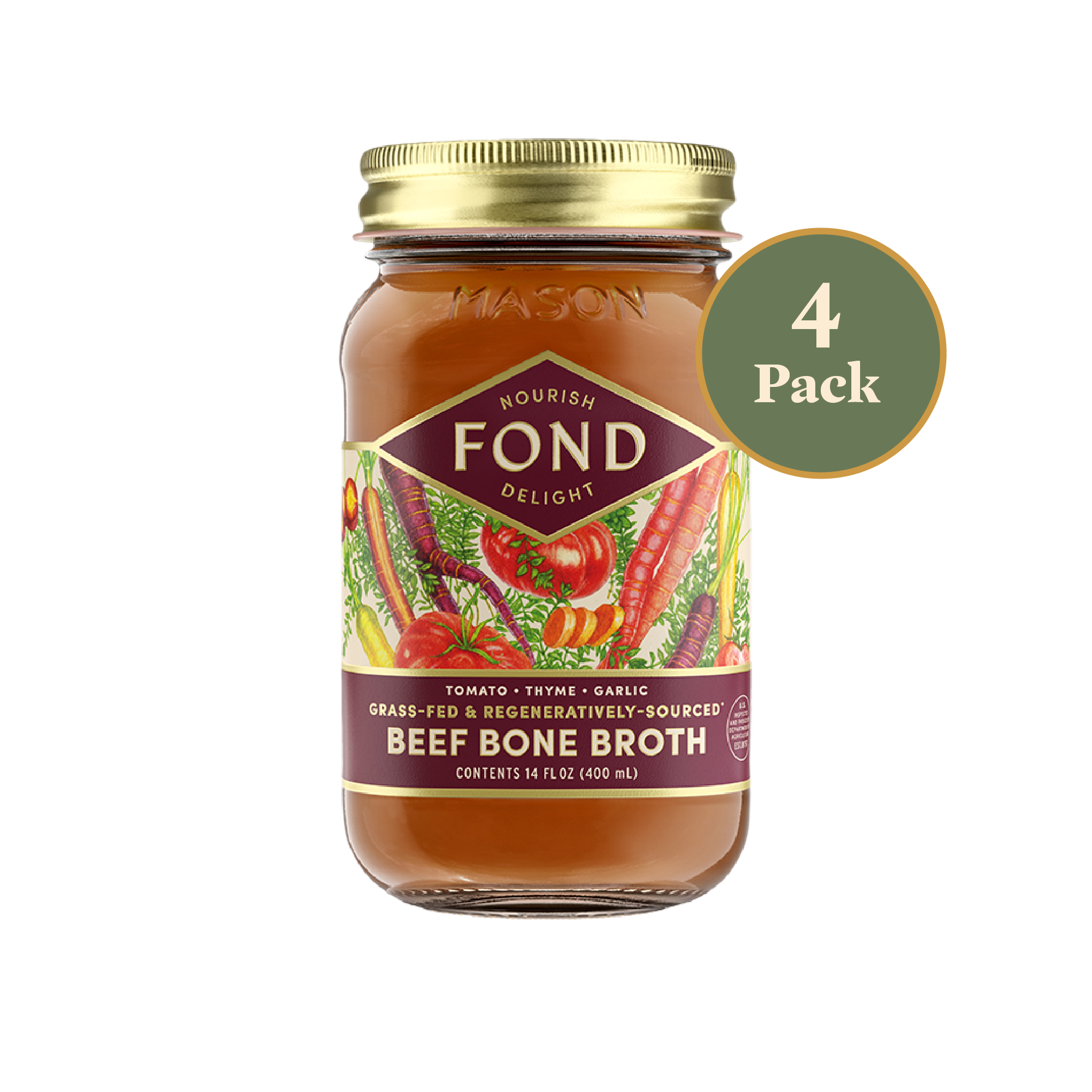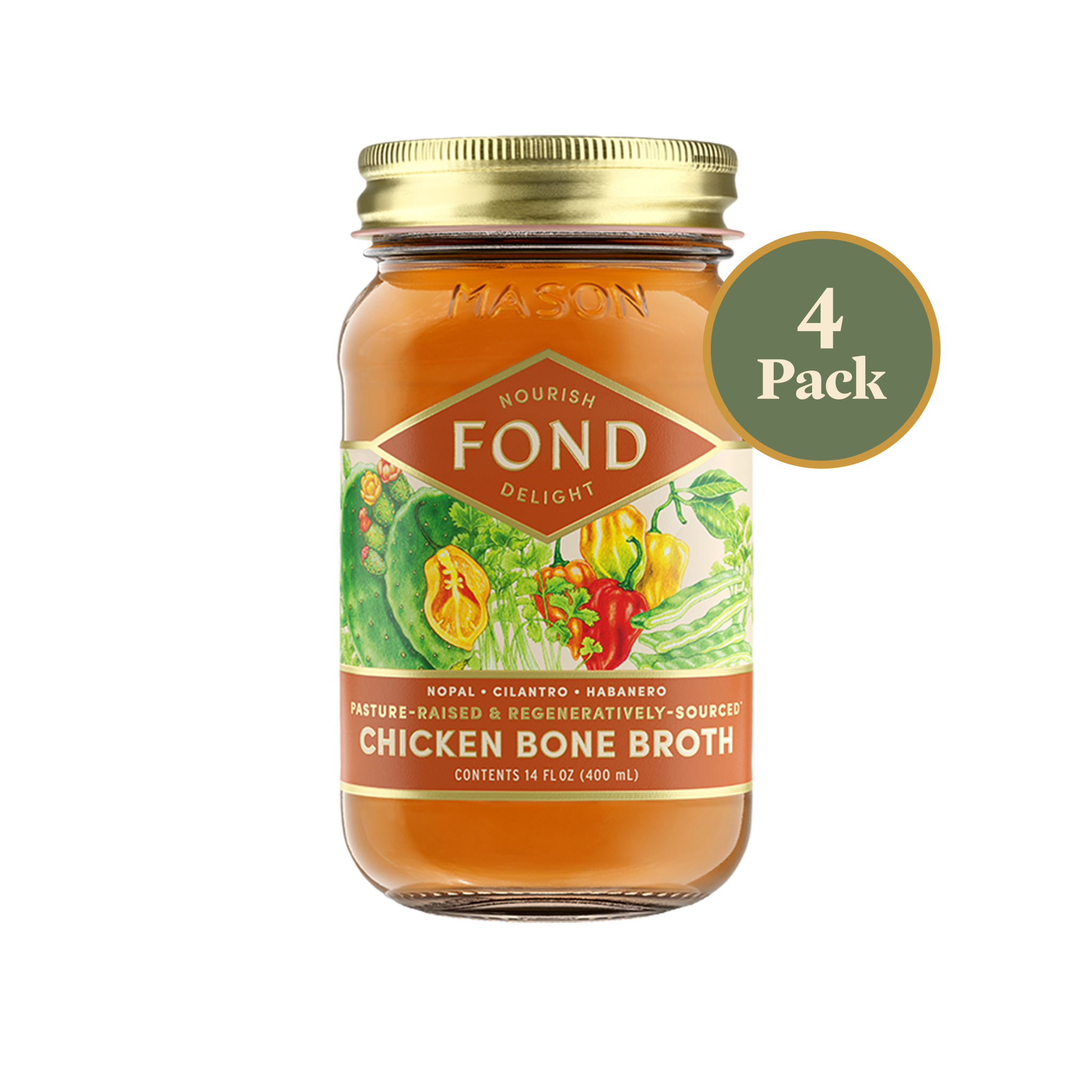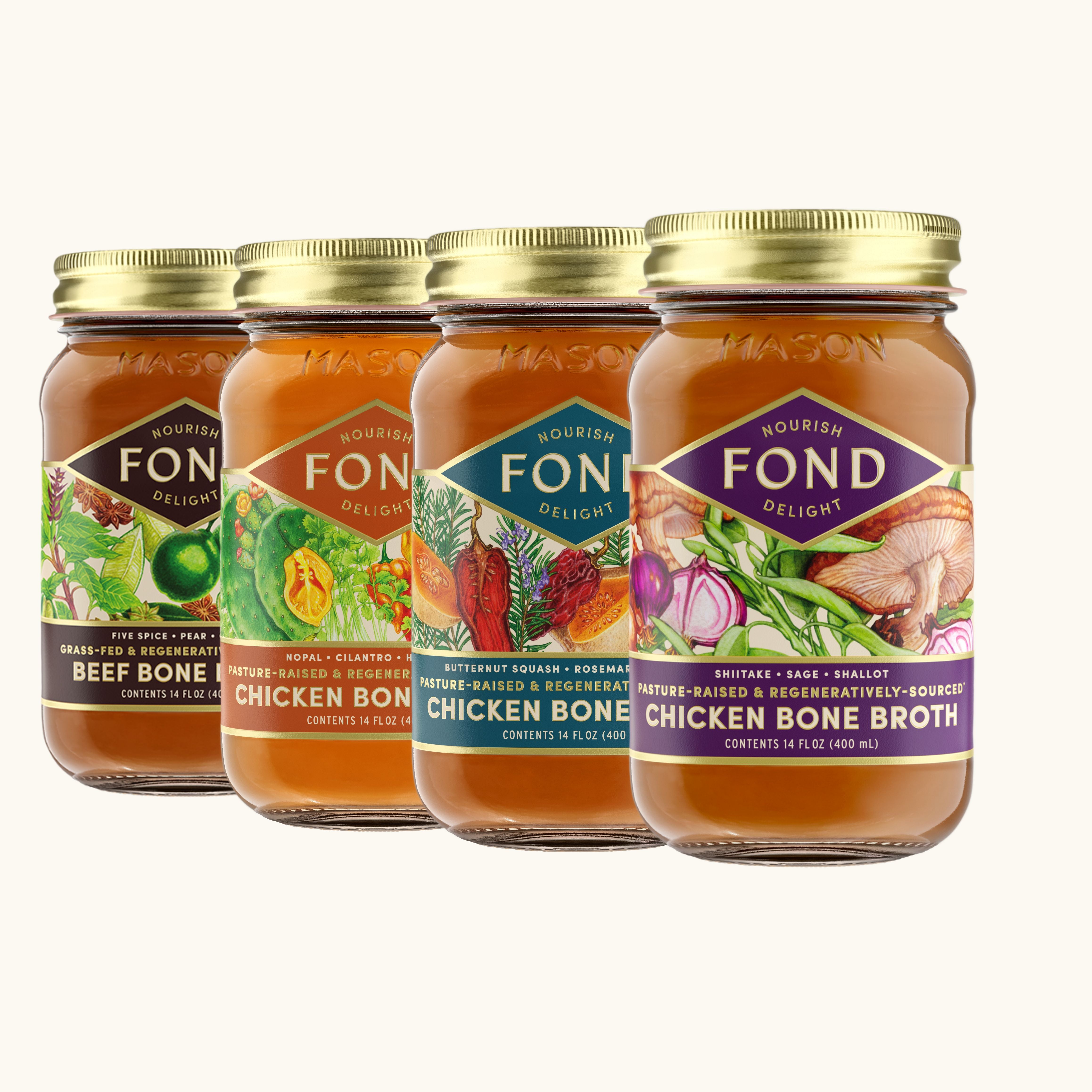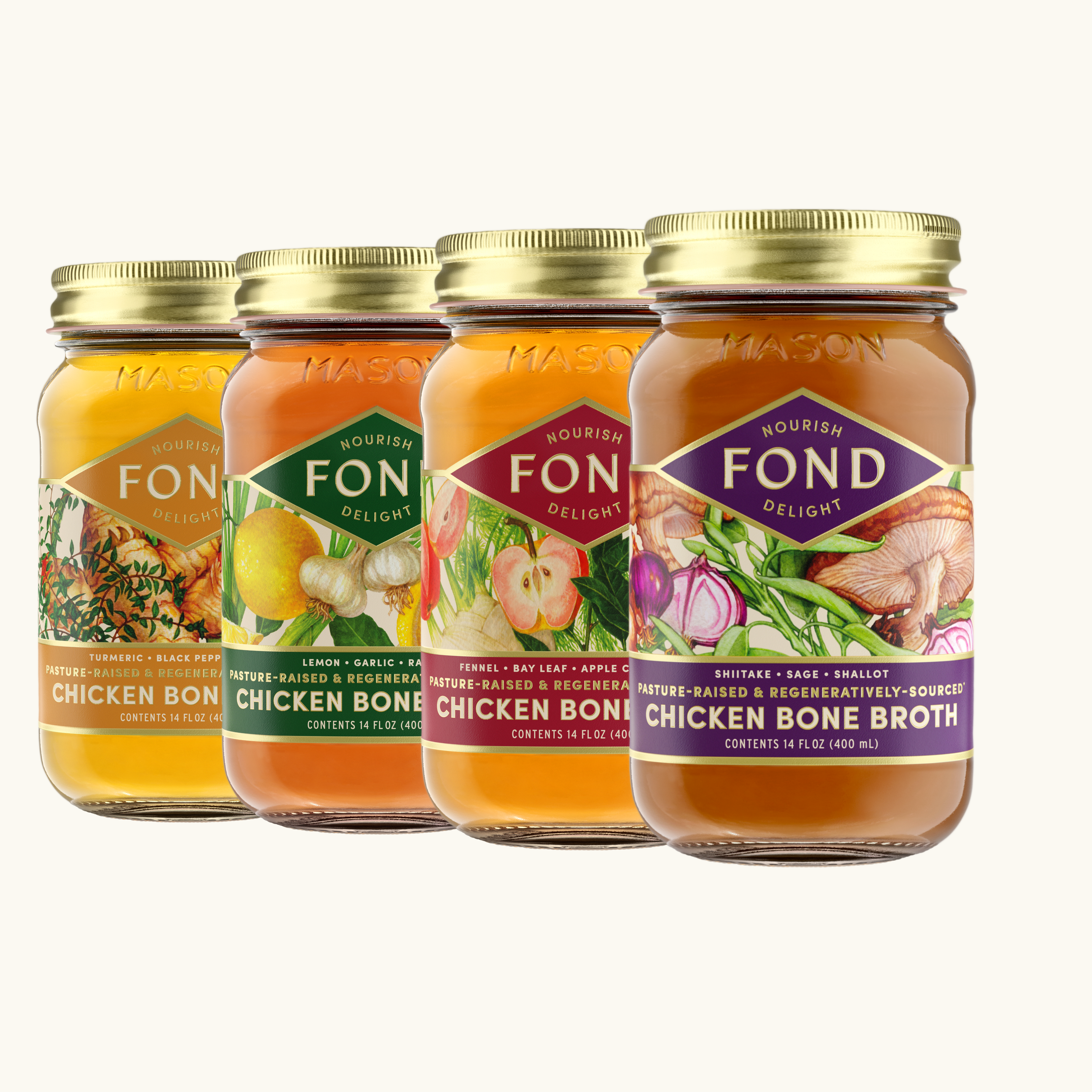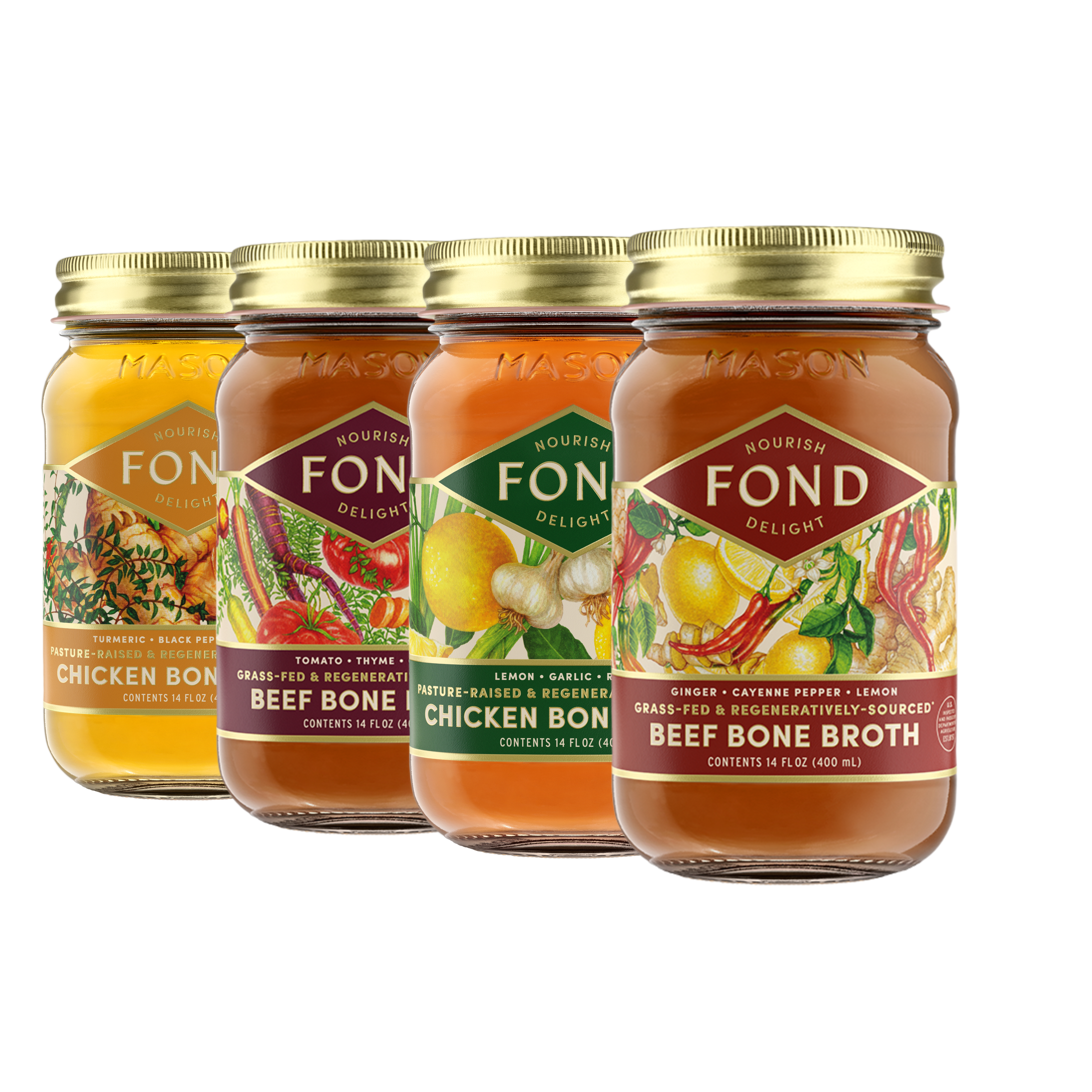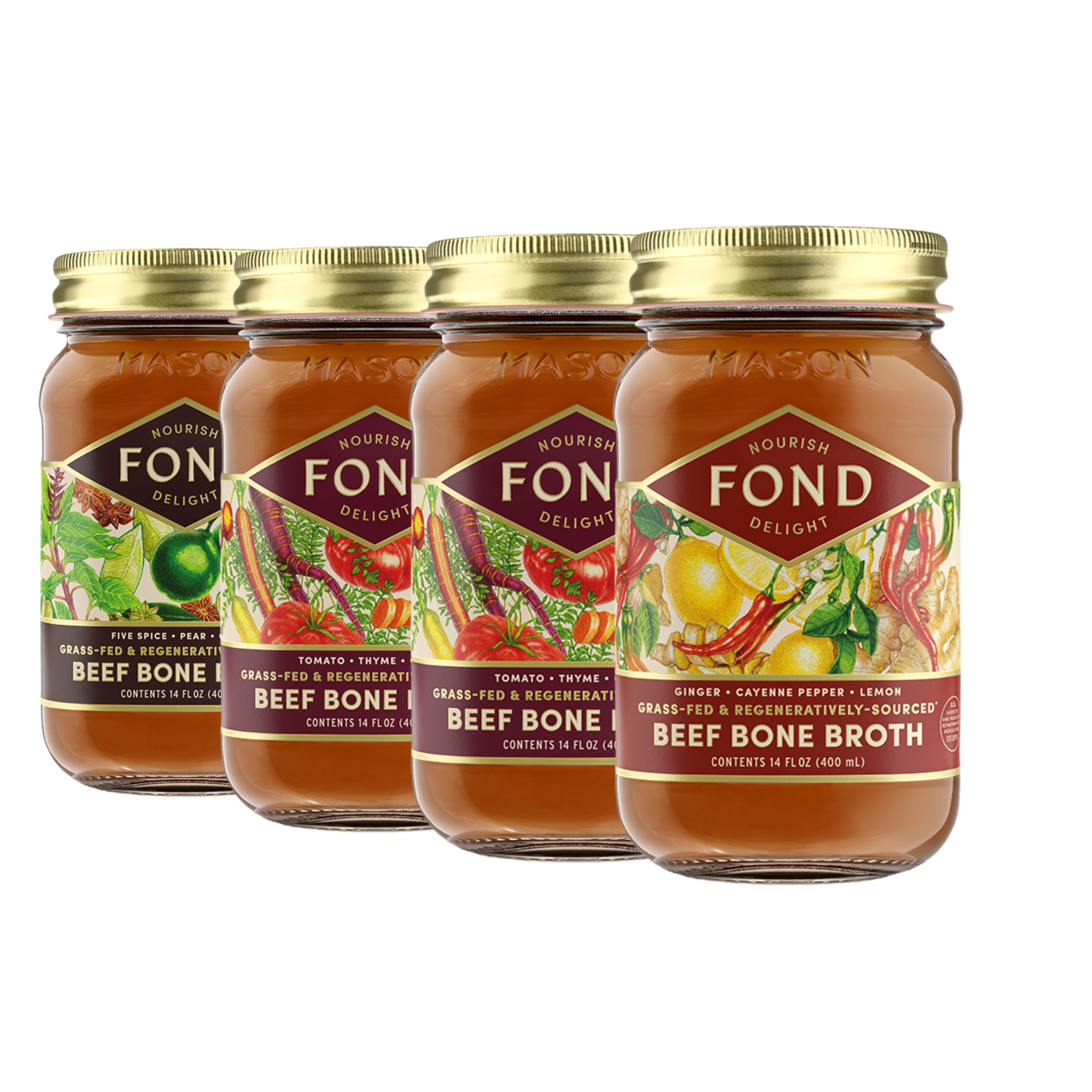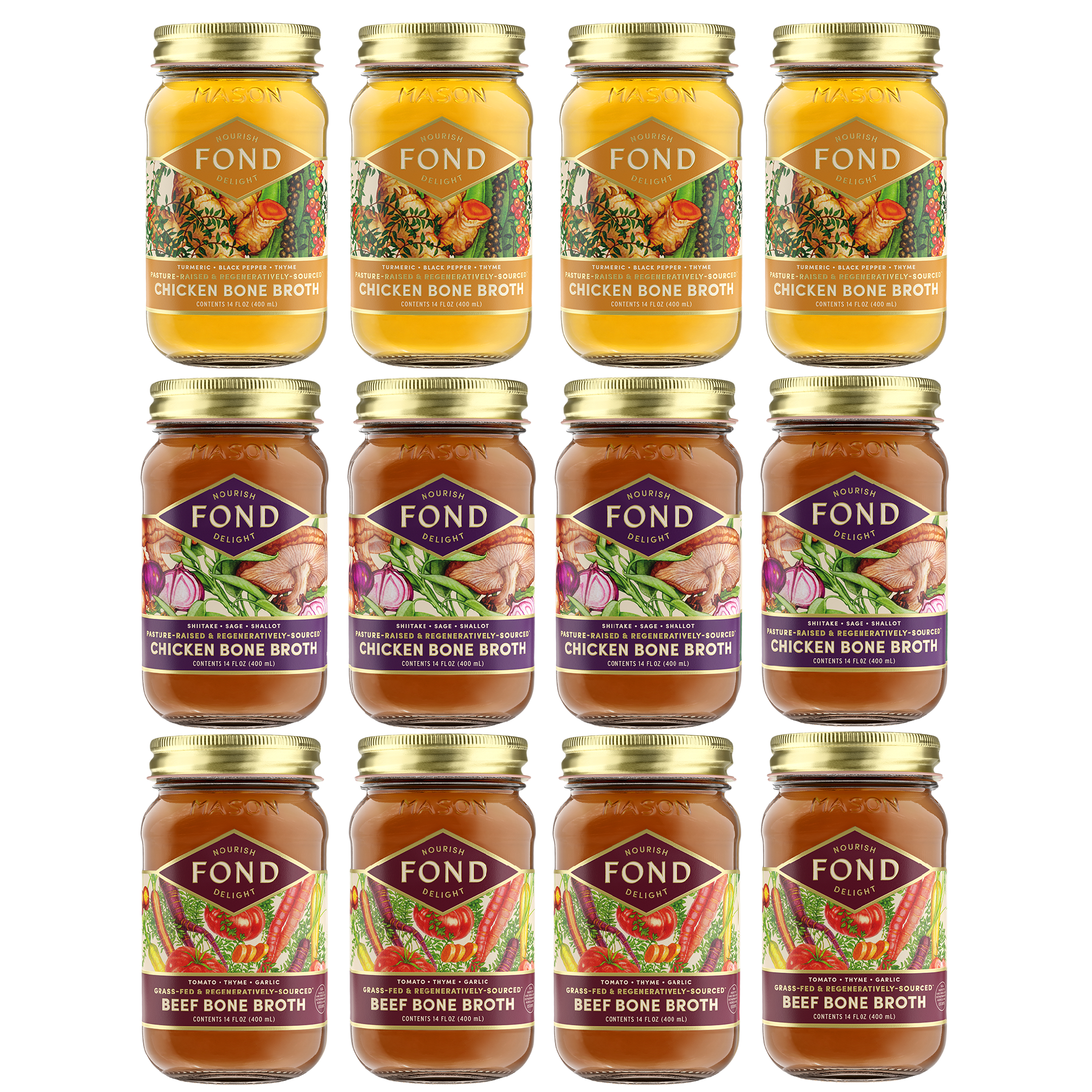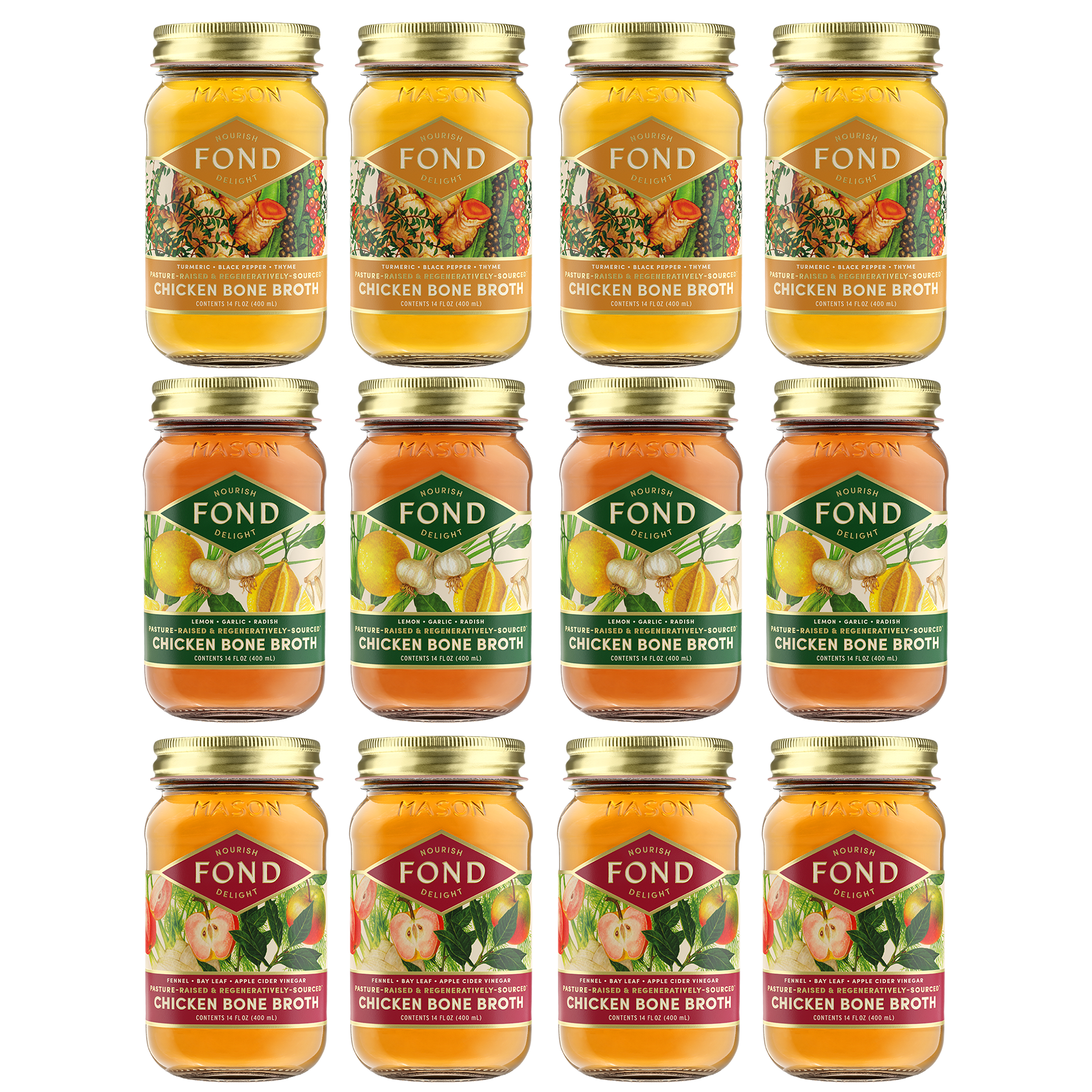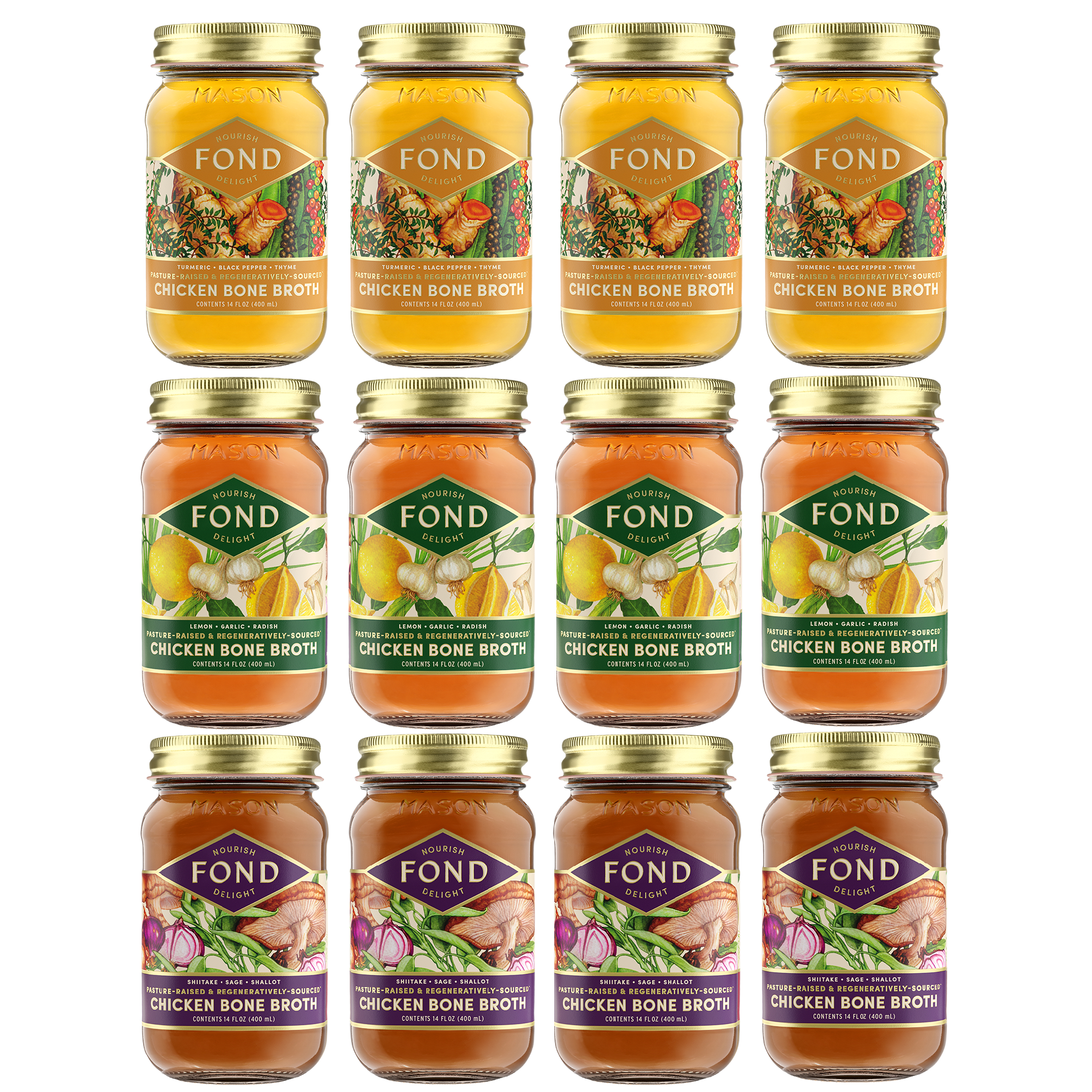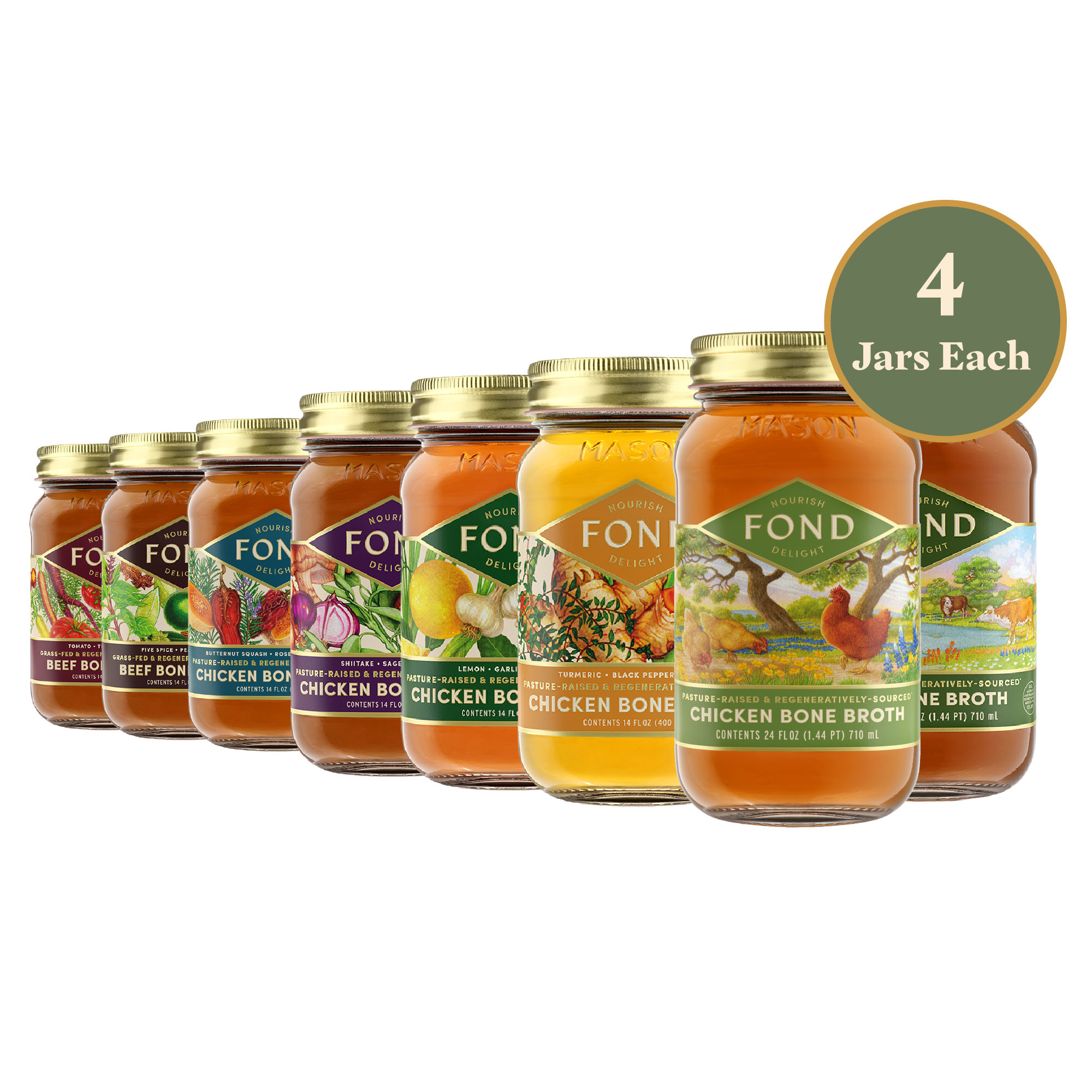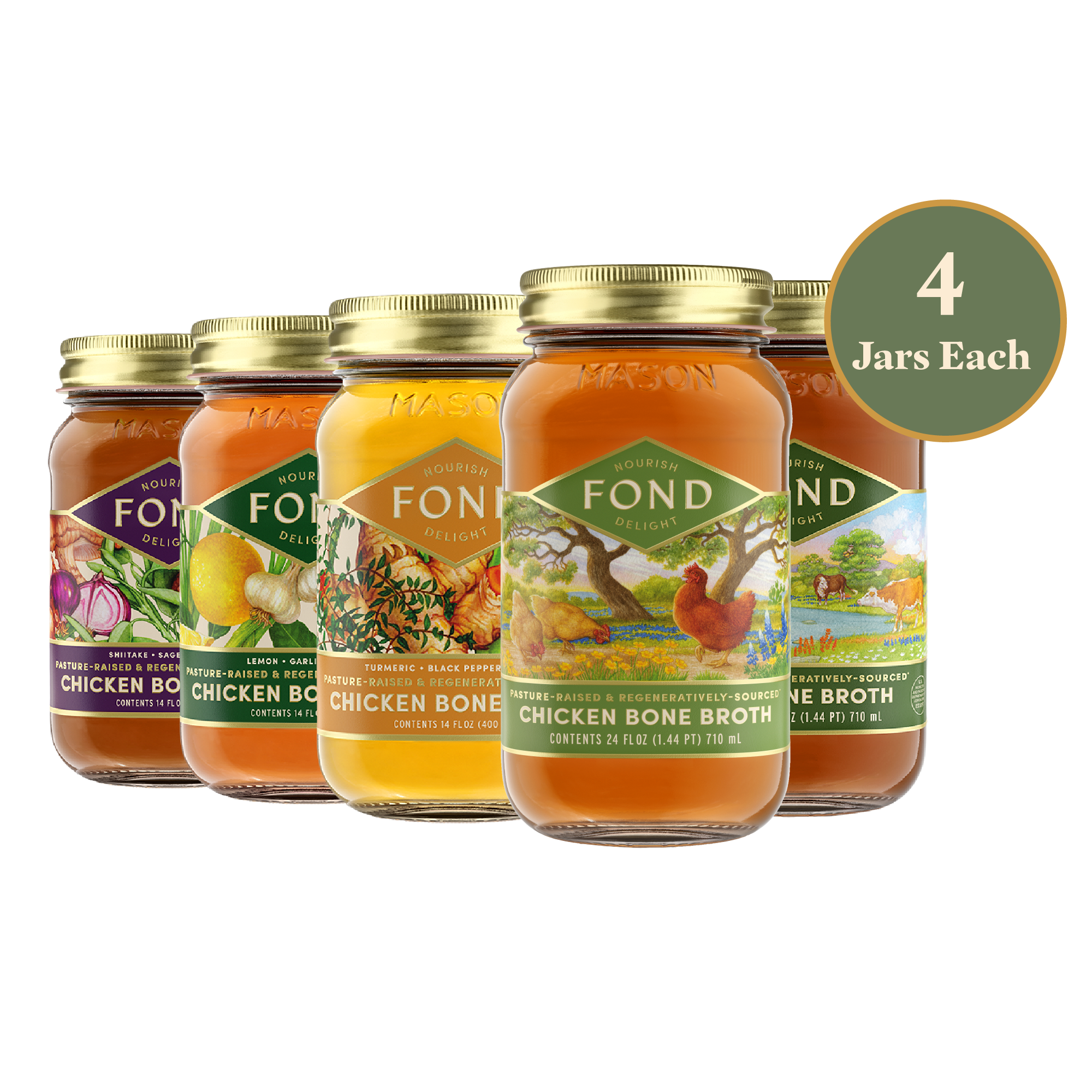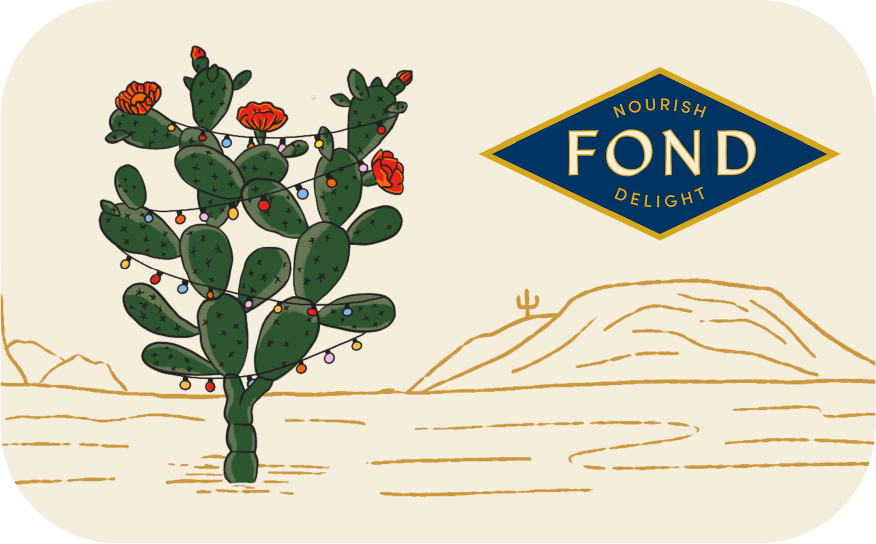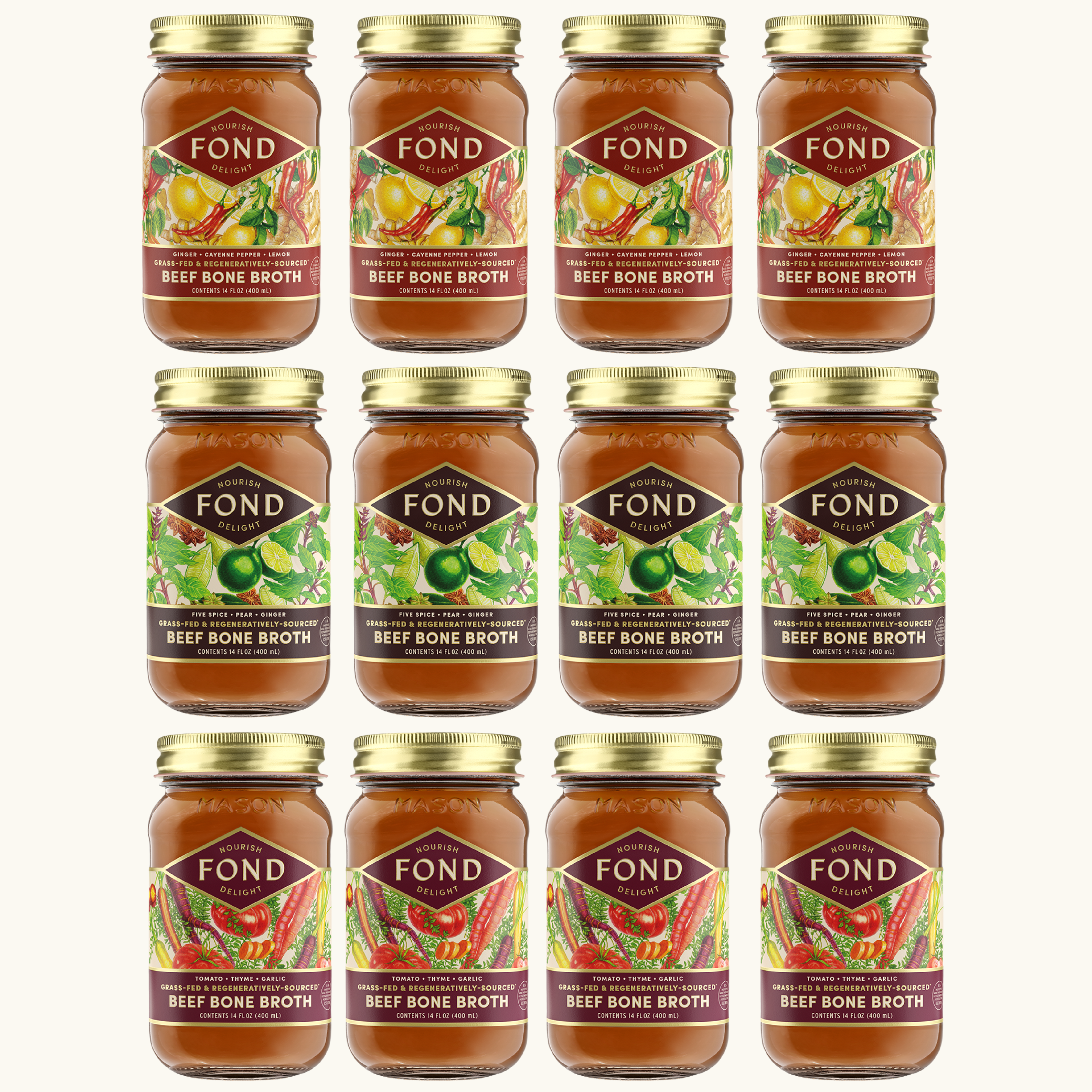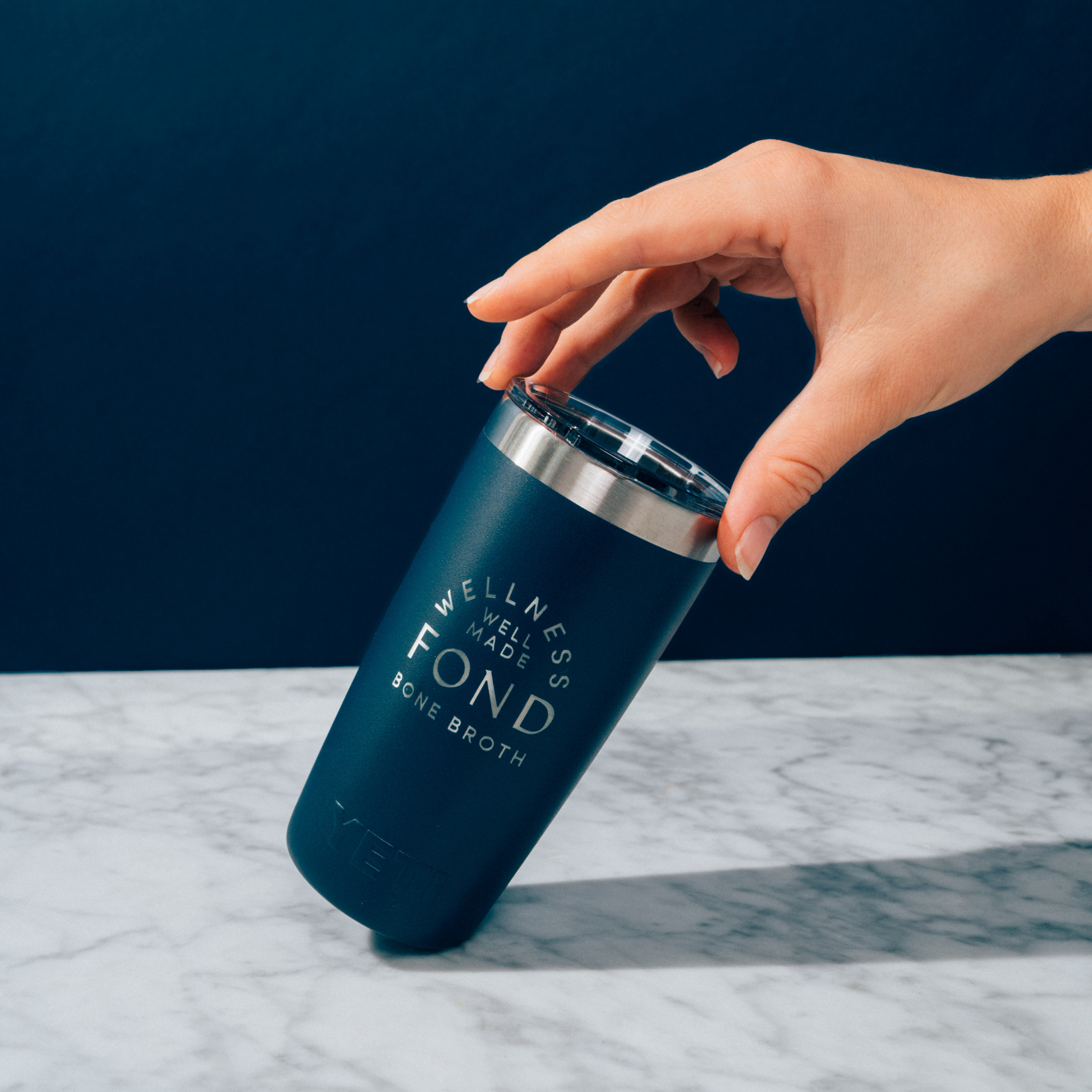We began straying from traditional fats like lard and tallow more than a century ago, and our health has paid the price. At FOND, our goal is to bring foundational nourishment back to the table, with products you can use daily to easily bring flavor and nutrient-density to your meals. We started with bone broth, then tallow, and now our newest limited-edition release: LARD! We’ve created two options - Pure & Unflavored and Cinnamon & Vanilla - to support all of your baking and cooking needs.
What is Lard?
Put very simply, lard is pork fat that has been separated from the meat. Most lard, including ours, is rendered, meaning the fat is cooked slowly until melted. There are different types of lard, including unrendered, rendered, processed, and leaf lard.
- Unrendered: This is pig fat before it’s been rendered or filtered. Essentially, it’s a block of pork fat! As you’d suspect, it has a strong pork flavor.
- Rendered: Here, the pork fat has been rendered and filtered. You’ve probably seen this type of lard at the farmers market or your local butcher.
- Processed: This type of lard is rendered, filtered, and then further processed for shelf-stability, sometimes using hydrogenation and bleaching. This is what you’ll most often find on store shelves.
- Leaf lard: This is what we offer here at FOND! Leaf lard is considered the highest-quality, and is named after where it comes from; the leaf-shaped portion of fat around the pig’s kidneys and abdomen. It doesn’t have any pork smell, and has a soft, creamy texture.
FOND’s lard is slow-rendered in stainless steel kettles, then packaged in our signature glass jars. Because of the way we jar our products, they are naturally preserved without any added ingredients or harmful processes.
The Health Benefits of Lard
Lard is rich in monounsaturated fats, low in polyunsaturated fats, and contains beneficial omega-3 fatty acids (particularly pastured lard like ours!). It even contains vitamin D, which is not found naturally in many foods. It also has a high smoke point, making it great for sauteing, frying, baking, and everything in between.
No BHA Here!
What Is BHA?
A lot of shelf-stable lard contains BHA, a preservative that’s used in cured meats and other foods. Though there hasn’t been a lot of research done in humans, there are animal studies that show it’s problematic for health. The National Toxicology Program has classified BHA as “reasonably anticipated to be a human carcinogen” since 1991.
BHA was first given the distinction of “generally recognized as safe, ” also known as GRAS, by the FDA in 1958. This happened without the FDA ever reviewing it for safety, since congress passed a law that established a pre-market food additive review.
At FOND, we would never use harmful additives, preservatives, or extra ingredients. Our Pure & Unflavored Lard only contains rendered pork fat, and our Cinnamon & Vanilla only contains (you guessed it!) rendered pork fat, Ceylon cinnamon, and vanilla bean.

How to Cook with Lard
Enjoy using it at room temperature in short crusts and your favorite baked goods. With its high smoke point, it’s also ideal for frying, roasting, searing, and more. Here are a few of our favorite uses!
- Add depth of flavor to any pastry
- Baking pies (sweet and savory!)
- Roasting potatoes
- As a base for deep frying
- As a finishing oil for crispy skin on meats
- To add blood sugar balance to rice and grains
- Flavoring soups
- Making tamales
- Seasoning your cast iron skillets
- As a balm for skin nourishment
Comparing Lard, Tallow, and Other Fats
When it comes to animal fats specifically, there is no right or wrong choice. They’re just good for different things! While we love lard and tallow in our households, we also adore butter (Alysa is on a journey with French butter at the moment 😍!) and duck fat. And in the realm of other oils, we definitely utilize high-quality extra virgin olive oil and unrefined coconut oil, depending on what we’re cooking, baking, or blending up.
But what’s the difference between these different fats, and how do we like to use them?
What is tallow?
Tallow is primarily made from cattle suet, but can also be made from sheep, goats, and elk. Suet is the hard white fatty layer around organs, typically the loins and kidneys. To make tallow, these fatty pieces are melted very slowly for 6 to 8 hours. Then, any grainy bits or impurities are strained away, leaving behind a pure, smooth tallow, like our Pure & Unflavored Beef Tallow.
Lard versus Tallow
For us, it’s lard AND tallow. We use and love them both in our kitchens, for everything from baking and roasting to frying. In general, here’s how we use them:
- Tallow - Deep or pan frying, sautéing, and roasting
- Lard - Baking (hello, flaky crusts!), making tamales and tortillas, deep or pan frying
Lard versus other Butter, Olive Oil, and Other Fats
As we mentioned above, we still love using grass-fed butter and extra virgin olive oil (EVOO) in our kitchens. Lard has a different nutritional profile when compared to butter and EVOO. Of the three, butter has the lowest amount of monounsaturated fats and the most saturated fat, with lard falling in the middle, and EVOO having the highest amount of monounsaturated fat and the lowest amount of saturated fat. Since they are all nourishing fats, for us it’s more about the use-case and less about the specific nutrients.
For example, we love EVOO for cold uses, like marinades and salad dressings, or to drizzle on fresh burrata. When it comes to butter, is there anything better than a slice of sourdough with a slab of French butter on top? Our tallow is great for everything from fried eggs and potatoes to roasted veggies, and our lard is the true MVP for baking (though it’s great for roasting and frying, too).
Are lard and shortening the same?
They are definitely not the same thing! Lard is a naturally-occurring animal fat, and shortening (Crisco is a popular brand), is a man-made, heavily-processed fat. Though recipes may mention them interchangeably, their health benefits (or lack there-of in the case of shortening) couldn’t be more different.
The History of Lard
If you’re already acquainted with the story behind our tallow, and the rise in seed oil consumption, this will sound familiar. For a full deep dive, read our article ‘The Rise of Seed Oils: Why You Should Avoid Them’.
Up until the early 1900s, animal fats were the go-to option for cooking, and for other household items like candles and soaps. Then, with pressure to cut costs and concerns about the purity of animal fats, producers began looking for replacements.
The first foray into animal fat replacements was Crisco, a highly-processed version of cottonseed oil, brought to us by Proctor & Gamble. It was touted as the “modern” alternative to lard, and began slowly replacing traditional animal fats. By the mid-1900s, the demonization of saturated fats had begun, and seed oils were being marketed as healthier alternatives. Slowly, traditional fats like tallow and lard were replaced with cheaper, mass-produced oils.
Fast forward to today, where we are (slowly) returning to our nourishing roots, and animal fats are having a well-deserved resurgence. We’re so proud to be offering high-quality versions of these foundational fats for you and your family.
Common Myths About Lard
Where do we begin? As the US has made the shift from animal fats to man-made, industrial fats, the messaging around animal fats has only become more and more negative.
To start, there’s a common myth that lard is bad for you. Is lard actually bad for you? No! Lard has a high smoke point, meaning it’s safe to use at higher heats, and it’s also rich in monounsaturated fats, low in polyunsaturated fats, and contains beneficial omega-3 fatty acids. It even contains vitamin D, which is hard to find in food sources!
There’s also a belief that lard will always contain additives or be adulterated with other fats, and that couldn’t be farther from the truth! As with most other foods, there are a range of options available.
Then there’s the perception that lard is a dirty fat, which may be true depending on sourcing, but it’s certainly not true for FOND. Our lard is the highest-quality you can find, sourced from healthy and happy 100% pastured (in the forest, among the trees!) hogs.
Where to Buy High-Quality Lard
Curious where to buy lard? Look no further! Our lard is the highest-quality on the market, sourced from regeneratively and pasture-raised heirloom hogs, slow-rendered, and packaged in glass.

How to Store Lard
Though this isn’t true for all lard, ours is shelf-stable and can be stored right on your countertop! If left unopened, it will last 2+ years, but don’t let it languish in the pantry. This beautiful, limited-edition lard deserves to be used regularly. And once you taste it, you’ll agree!
Why FOND Created Lard
Our battle cry is bonne santé; to your good health. We believe that you can make yourself healthier every time you pick up your fork. We created our foundational fats, including lard, to bring even more nutrition and flavor back into your kitchen, all while prioritizing nose-to-tail animal sourcing. Unlike chemically-processed vegetable oils, which are devoid of nutrition and net harmful, lard is an internal (and external!) salve to nourish and repair your cells. It is rich in essential nutrients and healthy fats, and it provides incredible flavor for your cooking.
But not all lard is created equal, and it’s only as healthy as the animals it comes from. Just like in humans, toxins and pollutants are typically stored in the hog’s fat tissue. If your lard comes from a ‘conventional’ farm, the pesticides, low-quality feed, and other toxins will make their way into the animal, and eventually you.
Like everything that we do here at FOND, our lard was formulated to meet the highest quality standards. Not only is it the first verified regenerative lard on the market, but our flavored variety is infused with the same high-quality add-ins that you’ve come to expect from our tallow and bone broth. And it’s packaged in glass to ensure no plastic leaches into your precious lard. We hope you’ll give it a try!
Frequently Asked Questions about Lard
What is lard made of?Put very simply, lard is pork fat that has been separated from the meat. Most lard, including ours, is rendered, meaning the fat is cooked slowly until melted. There are different types of lard, including unrendered, rendered, processed, and leaf lard.
Is lard healthy?Yes! It’s rich in monounsaturated fats, low in polyunsaturated fats, and contains beneficial omega-3 fatty acids. It even contains vitamin D, which is hard to find in food sources!
How do I cook with lard?For the most part, just like you’d cook with any other fat! If you’re using an unflavored variety, you can use it for roasting, sauteing, frying, or baking. If you’re using our Cinnamon & Vanilla, it’s perfect for baking, pan-roasting apples, and adding a depth of flavor to soups.
Is lard healthier than butter?If you look at the numbers objectively, lard is healthier than butter by conventional health standards. It has a higher amount of monounsaturated fat, and lower amounts of saturated fat. But butter is a beautiful (and delicious) animal food that is great for certain applications, and we certainly still use it in our homes!
Are lard and shortening the same?This idea is floating around the internet, but they are definitely not the same thing! Lard is a naturally-occurring animal fat, and shortening (Crisco is a popular brand), is a man-made, heavily-processed fat.
What does lard taste like?If properly rendered, it shouldn’t really taste like much of anything! But it will add a richness and creaminess to your cooking, and will impart that signature fluffiness and flakiness to pastries, pies, and other baked goods.
Is lard good for seasoning cast iron?Yes, it’s great for that! Season away!








